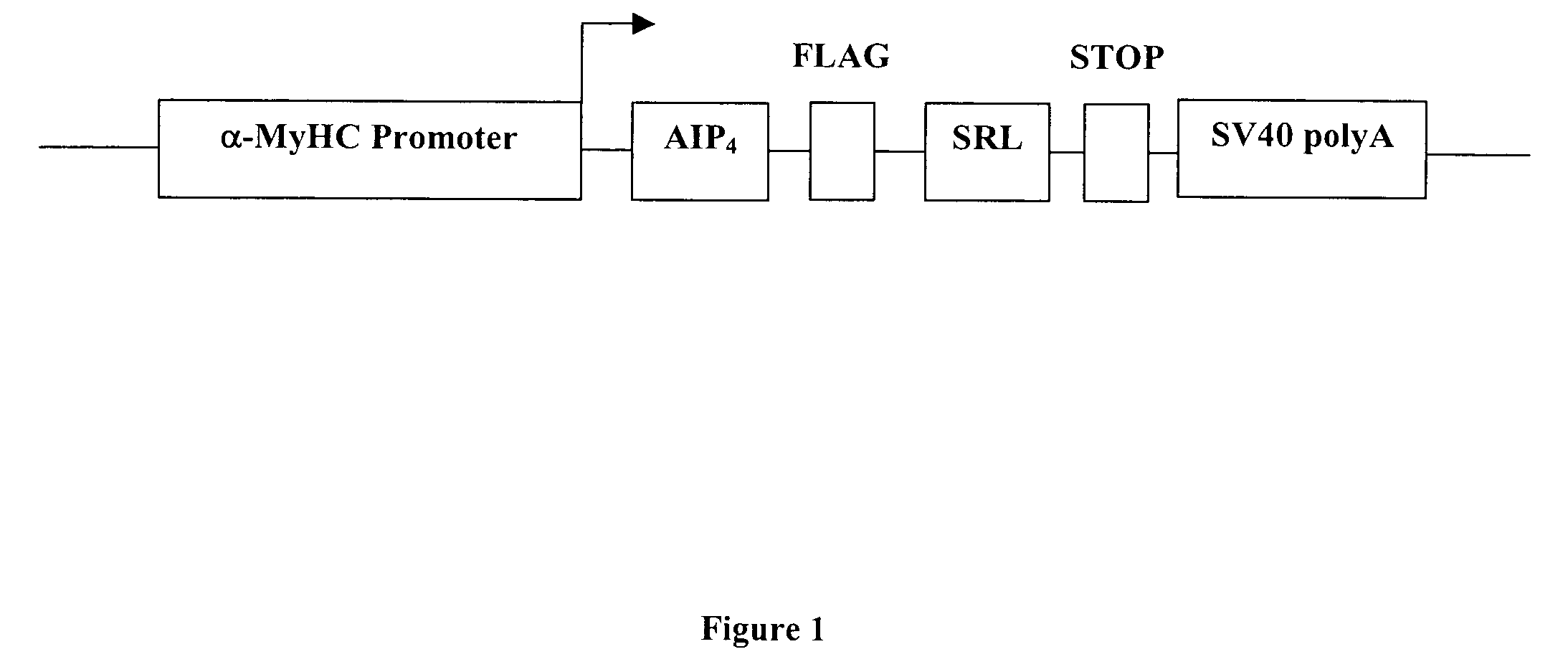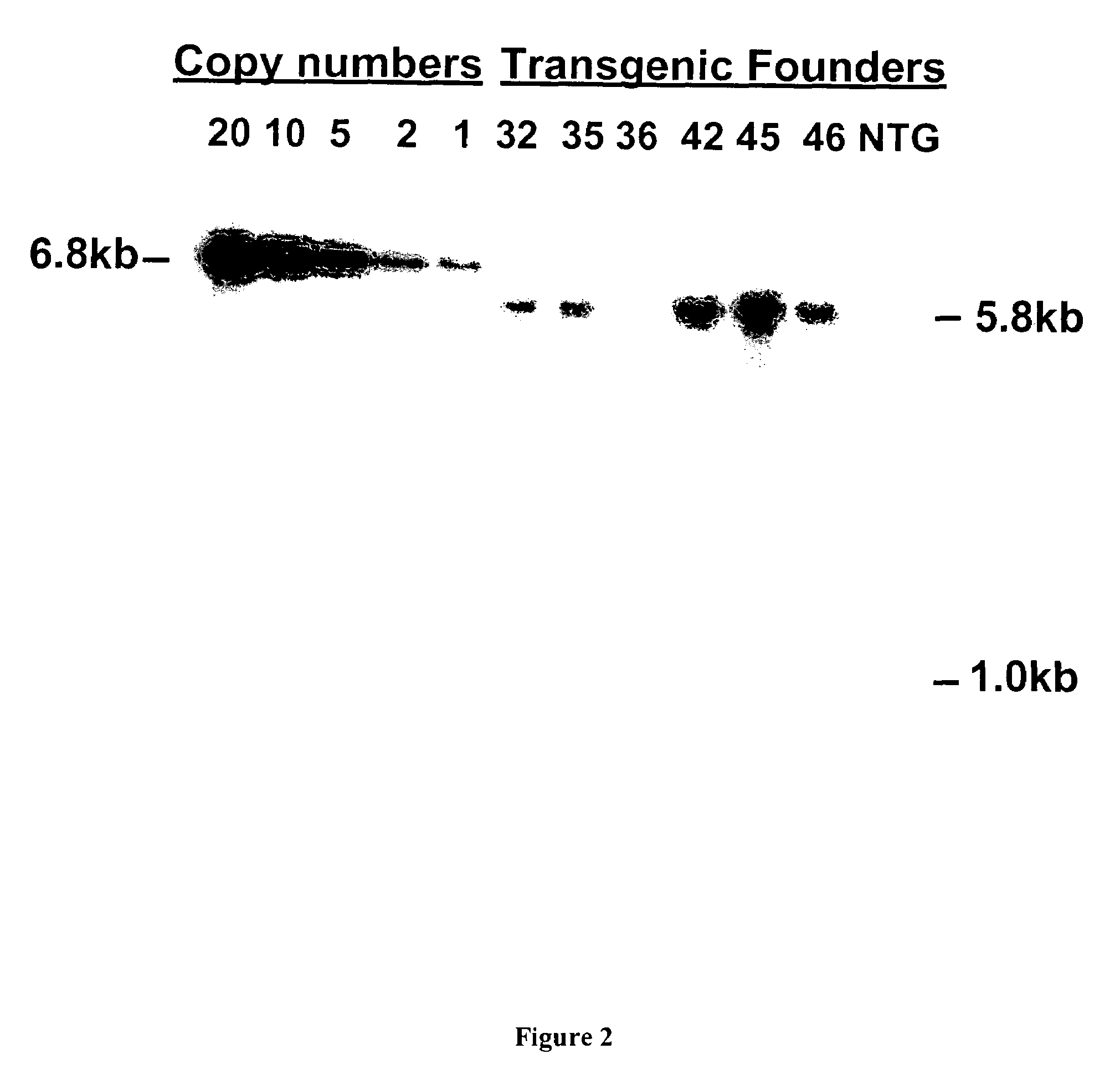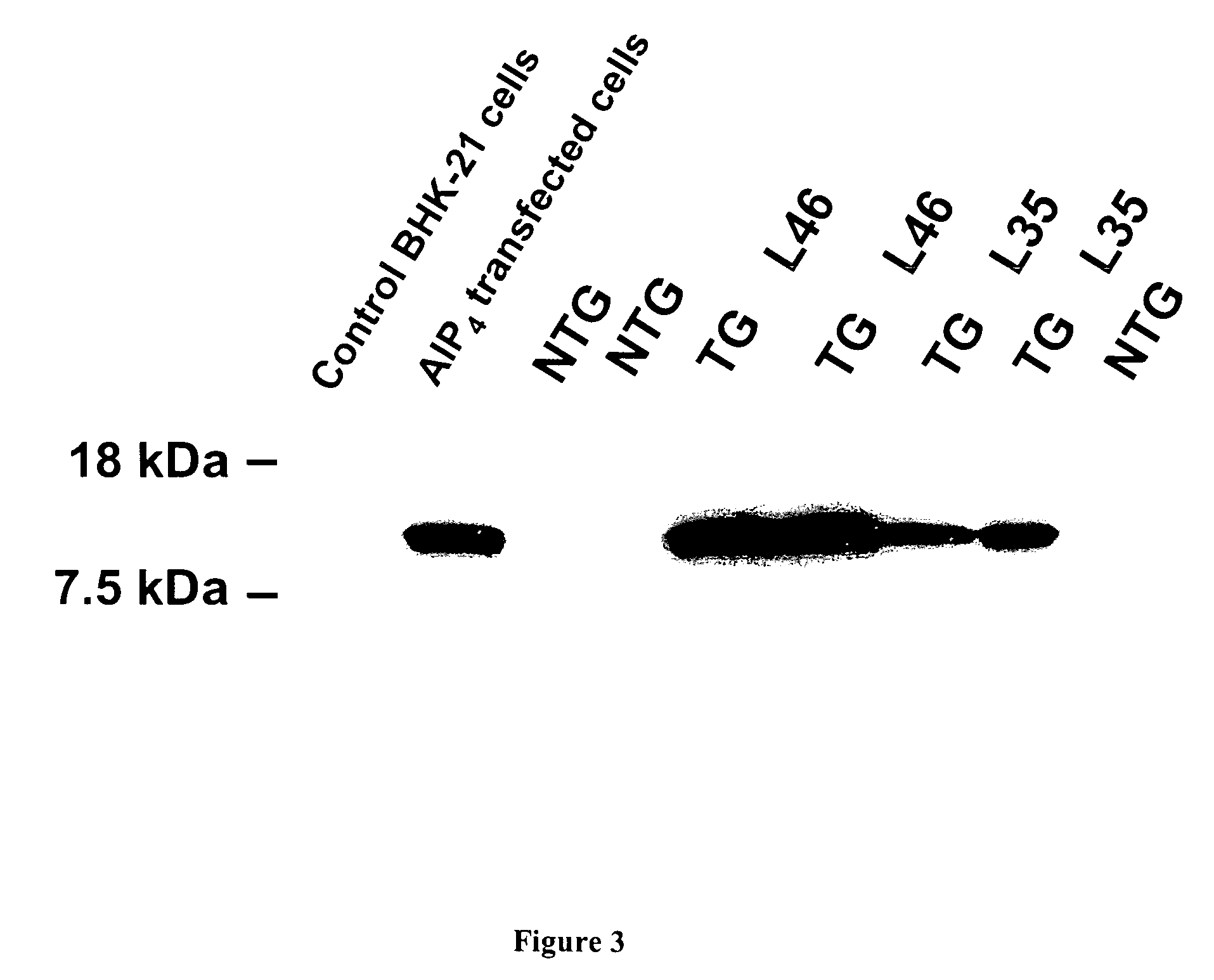Signal for targeting molecules to the sarco(endo)plasmic reticulum
a plasmic reticulum and sarco-endoplasmic technology, applied in the field of target molecules, can solve the problems of high permeability, possible efflux, and ineffectiveness of the most potent drug, and achieve the effect of reducing the risk of toxicity, and reducing the sensitivity of the target si
- Summary
- Abstract
- Description
- Claims
- Application Information
AI Technical Summary
Problems solved by technology
Method used
Image
Examples
example 1
[0048]A polypeptide sequence comprising an SRL and a FLAG™ epitope are synthesized. The polypeptide is solubilized in media that is added to PC12 cells cultured on cover slips. The polypeptide is endocytosed by the PC12 cells, and transported to the endoplasmic reticulum. Six hours after treatment with the polypeptide, the media is removed and cells are fixed to the coverslips. Immunohistochemical staining is performed using an anti-FLAG™ antibody. The FLAG™ epitope is detected in a region that is consistent with localization to the endoplasmic reticulum in the PC12 cells.
example 2
[0049]A transgene is constructed using a human cytomegalovirus (CMV) heterologous promoter to direct expression of a GFP-SRL fusion protein. The transgene is transiently transfected into PC12 cells. After 48 hours, the cells are viewed by confocal microscopy. The GFP-SRL fusion protein is found localized to a discrete region of the endoplasmic reticulum.
example 3
[0050]A transgene construct is built to produce a protein product with expression driven by a CMV promoter. The transgene comprises a synthetic gene expression unit engineered to encode three functional domains. Each of these three functional domains is synthesized as a pair of complimentary oligonucleotides that are annealed in solution and then assembled in a cloning vector in consecutive steps. Starting at the amino-terminus, the expression unit contains nucleotide sequences that encode a CaMKII auto-inhibitory polypeptide (AIP), a FLAG™ epitope, and an SRL. The nucleotide sequences encoding the AIP polypeptide produces a 13 amino acid product (KKALRRQEAVDAL)(SEQ ID NO:7) known to be a highly specific and potent inhibitor of CaMKII. Nucleotide sequences encoding a FLAG epitope (amino acids DYKDDDDK)(SEQ ID NO:8) are placed 3′ of those encoding AIP. Finally, nucleotide sequences encoding an SRL are placed 3′ of those encoding the FLAG epitope. The nucleotide sequences used encode ...
PUM
| Property | Measurement | Unit |
|---|---|---|
| thick | aaaaa | aaaaa |
| non-hydrophobic | aaaaa | aaaaa |
| hydrophobic | aaaaa | aaaaa |
Abstract
Description
Claims
Application Information
 Login to View More
Login to View More - R&D
- Intellectual Property
- Life Sciences
- Materials
- Tech Scout
- Unparalleled Data Quality
- Higher Quality Content
- 60% Fewer Hallucinations
Browse by: Latest US Patents, China's latest patents, Technical Efficacy Thesaurus, Application Domain, Technology Topic, Popular Technical Reports.
© 2025 PatSnap. All rights reserved.Legal|Privacy policy|Modern Slavery Act Transparency Statement|Sitemap|About US| Contact US: help@patsnap.com



